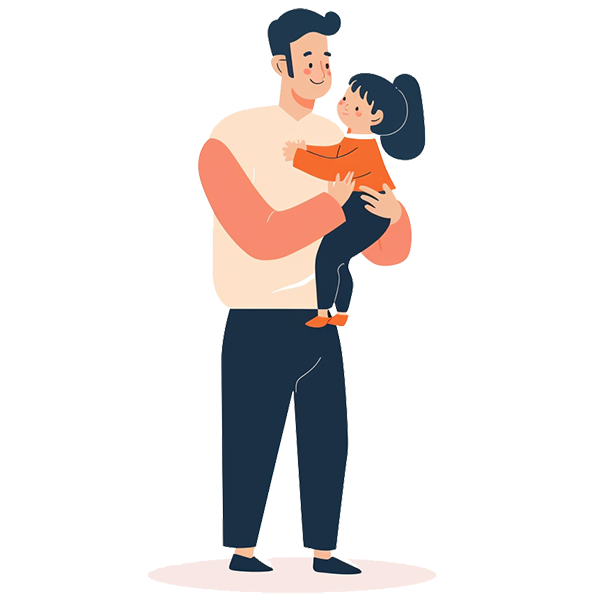NCFE CACHE Level 2 Diploma for the Early Years Practitioner

Subject Area: Childcare
62 Lessons Available
Understand best practice for meeting the individual needs of young children
18 sections.
Lesson
Understand the play environment
11 sections.
Lesson
Understand how the Early Years Practitioner supports children’s behaviour and socialisation within play environments
12 sections.
Lesson
Be able to promote positive behaviour
11 sections.
Lesson
Be able to support different types of play for babies and young children
16 sections.
Lesson
Understand the impact of food and nutrition on children’s health and development
12 sections.
Lesson
Understand healthy balanced diets and hydration
18 sections.
Lesson
Be able to support the nutrition and hydration of babies and young children in an Early Years Setting
13 sections.
Lesson
Understand the impact of health and well-being on babies and young children’s development
16 sections.
Lesson
Understand individuals’ dietary requirements and preferences
13 sections.
Lesson
Be able to support healthy eating in an Early Years Setting
15 sections.
Lesson
Understand babies and young children’s need to be physically active
12 sections.
Lesson
Be able to support babies and young children to be physically active in an indoor and outdoor space and support physical activity in an Early Years Setting
12 sections.
Lesson
Understand statutory guidance in relation to the care and education of children with Special Educational Needs and Disabilities (SEND)
19 sections.
Lesson
Understand how children learn and develop in the early years
22 sections.
Lesson
Understand the impact of transition
21 sections.
Lesson
Be able to support babies and young children through purposeful play activities and educational programmes
16 sections.
Lesson
Be able to plan to meet the individual stages of babies and young children
24 sections.
Lesson
Be able to work in partnership
16 sections.
Lesson
Understand policies and procedures relating to positive behaviour in Early Years Settings
12 sections.
Lesson
Be able to support positive behaviour
13 sections.
Lesson
Be able to follow policy and procedure for behaviour within an Early Years Setting
13 sections.
Lesson
Be able to reflect on own role in relation to managing children’s behaviour in an Early Years Setting
12 sections.
Lesson
Understand the principles of partnership working in relation to current frameworks when working with babies and young children and understand how to work in partnership
12 sections.
Lesson
Be able to work alongside parents/carers, colleagues and other professionals
17 sections.
Lesson
Understand challenges to partnership working
13 sections.
Lesson
Understand recording, storing and sharing information in relation to partnership working
13 sections.
Lesson
Understand the role of the Early Years Practitioner during transition to school and understand how working in partnership with others contributes to children’s well-being during transition to school
14 sections.
Lesson
Be able to support children’s language and communication needs in preparation for school
18 sections.
Lesson
Be able to support children’s mathematical development in preparation for school
20 sections.
Lesson
Understand the role of the Early Years Practitioner
11 sections.
Lesson
Be able to work in ways which support equality, diversity and inclusive practice in an Early Years Setting
12 sections.
Lesson
Be able to communicate with babies, young children and others
17 sections.
Lesson
Understand factors impacting on communication in practice
16 sections.
Lesson
Understand working relationships in Early Years Settings
14 sections.
Lesson
Understand why Continuing Professional Development (CPD) is integral to the role of the Early Years Practitioner
Demonstrate CPD
16 sections.
Lesson
Understand legislation and guidelines for health and safety in Early Years Settings
14 sections.
Lesson
Understand policies and procedures for health and safety in Early Years Settings
14 sections.
Lesson
Understand risk management in Early Years Settings
11 sections.
Lesson
Be able to identify hazards in an Early Years Setting
15 sections.
Lesson
Be able to manage risk within an Early Years Setting in line with statutory requirements
16 sections.
Lesson
Understand how to identify and record accidents, incidents and emergencies
12 sections.
Lesson
Understand the roles and responsibilities of the Early Years Practitioner in recognising allergies and intolerances in babies and young children
14 sections.
Lesson
Understand the roles and responsibilities of the Early Years Practitioner in recognising signs and symptoms of illness in babies and young children
17 sections.
Lesson
Be able to access documentation in the event of accidents, incidents or emergencies
14 sections.
Lesson
Understand legislation and statutory guidance for practice in the early years
12 sections.
Lesson
Understand how policies and procedures inform equality, diversity and inclusive practice
12 sections.
Lesson
Be able to locate policies and procedures in an Early Years Setting
12 sections.
Lesson
Understand legislation and guidelines for the safeguarding, protection and welfare of babies and young children
26 sections.
Lesson
Understand whistleblowing
13 sections.
Lesson
Understand how to respond to evidence or concerns that a baby or child has been or is at risk of serious harm or abuse
22 sections.
Lesson
Be able to locate policies and procedures for safeguarding babies and young children
11 sections.
Lesson
Understand the stages of child development from birth to seven years
19 sections.
Lesson
Understand influences on children’s learning and development
12 sections.
Lesson
Understand the importance of attachment for holistic development
16 sections.
Lesson
Understand the needs of babies and young children during transitions
12 sections.
Lesson
Understand the care needs of babies and young children
Be able to meet the care needs of babies and young children as appropriate to their development, stage, dignity and needs
17 sections.
Lesson
Understand hygienic practice in relation to control of infection in Early Years Settings in line with statutory requirements and be able to use hygienic practice to minimise the spread of infection in Early Years settings
17 sections.
Lesson
Understand rest and sleep needs of children
14 sections.
Lesson
Understand childhood immunisation
14 sections.
Lesson
Know about adult and child-initiated play
18 sections.
Lesson
Be able to follow statutory requirements for learning and development in an Early Years Setting
20 sections.
Lesson
